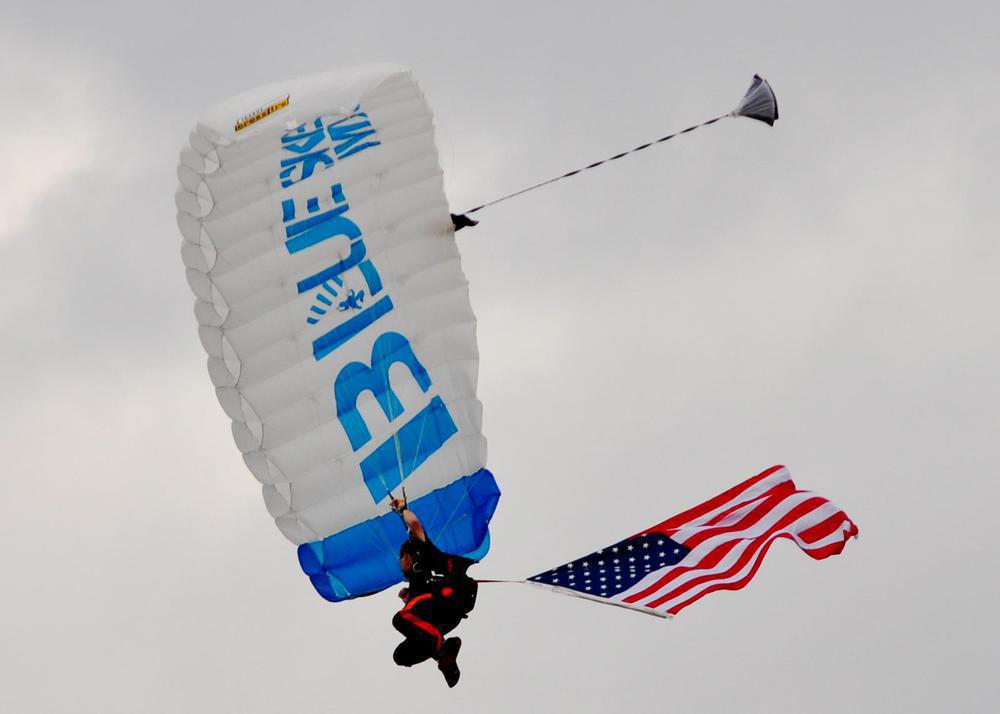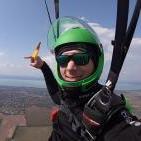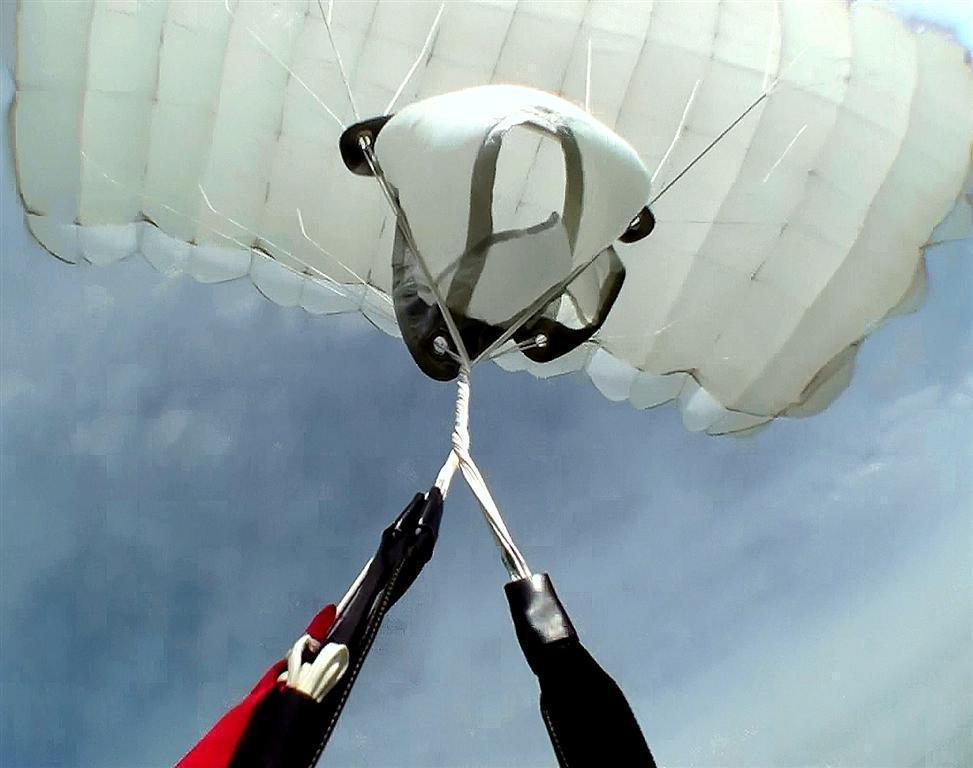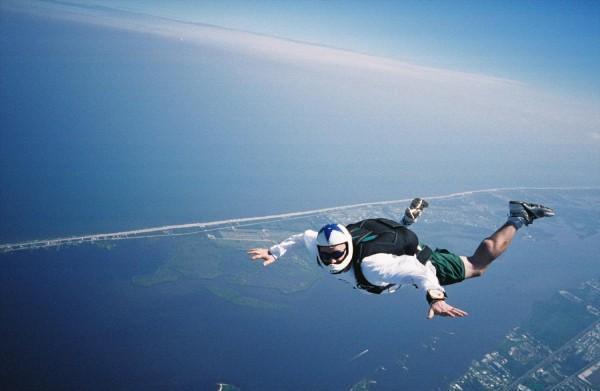Leaderboard
-
in all areas
- All areas
- Adverts
- Advert Questions
- Advert Reviews
- Videos
- Video Comments
- Blog Entries
- Blog Comments
- Images
- Image Comments
- Image Reviews
- Albums
- Album Comments
- Album Reviews
- Files
- File Comments
- File Reviews
- Dropzones
- Dropzone Comments
- Dropzone Reviews
- Gear
- Gear Comments
- Gear Reviews
- Articles
- Article Comments
- Article Reviews
- Fatalities
- Fatality Comments
- Fatality Reviews
- Stolen items
- Stolen item Comments
- Stolen item Reviews
- Records
- Record Comments
- Record Reviews
- Help Files
- Help File Comments
- Help File Reviews
- Events
- Event Comments
- Event Reviews
- Posts
- Status Updates
- Status Replies
-
Custom Date
-
All time
January 20 2016 - July 27 2024
-
Year
July 27 2023 - July 27 2024
-
Month
June 27 2024 - July 27 2024
-
Week
July 20 2024 - July 27 2024
-
Today
July 27 2024
-
Custom Date
02/18/2020 - 02/18/2020
-
All time
Popular Content
Showing content with the highest reputation on 02/18/2020 in all areas
-
3 pointsPerhaps I can shed some light on Baronn’s biggest concern of the Museum... 48 years of nothing. Two years ago, I had the same questions. Instead of taking the approach of making accusations and insults on the internet, I chose a different road. I asked some people that knew. My good friend Gary Peek was a USPA Board member for decades, and gave me the following historical explanation. Bill Ottley was the initial proponent of the idea. It was his “baby”. When he died, he left $1,000,000 as seed money to develop the concept of a Skydiving Museum. Not much was done for about 40 years. Money collected interest, small donations were made to incrementally increase the amount. USPA supported the concept with some donated clerical support and free advertising in Parachutist. When USPA sold their original office townhouse and built & moved to their present location about a decade ago, the Museum made a deal and acquired an adjacent building lot next to USPA headquarters. The idea at the time was to build the Museum next to the USPA building. One could go in one door, the Museum, or turn the other way for USPA. If you have ever been to USPA Headquarters, it seems the main entrance is “wrong”. It faces a vacant lot, not the parking lot as one would drive in. That’s because there was a plan to build a Skydiving Museum on that vacant lot. The problem is, there would be no reason to go to the Museum. It is not a destination. It’s not near any attraction. It’s an hour away from DC. It is simply in a suburban business park. Now, it’s great for USPA, but terrible for any kind of business dependent upon tourist traffic. So, about the time of President Bush’ AFF jump, the Museum seemed to come alive again. The leadership started installing new trustees, included President Bush as honorary Chairman, and undertook a serious effort to get something done. Since that period, they have quadrupled the money in the bank, dramatically increased and catalogued hundreds of Skydiving items of historic value, installed several high profile people as trustees, hired a professional for fundraising, sought the advice of professionals in museum organization and management, and completely revamped the antiquated & unworkable original concepts. So to me, the situation is like this...I go to work for a business that has been around for 40 years, but never grown. In about 8 years, I quadruple the money in the bank, sign up almost a dozen of the top people in the industry to work for free, develop and catalog an inventory of over 1000 pieces of huge skydiving historical value and warehouse them for free, develop a concept where people and organizations from all over the world are sending money, and finally have some kind of definite goal line, and end result. Should I be supported & rewarded for my last 8 years of huge success and progress? Or should I be penalized for the previous 40 years where not much was done, and I had no control or input? What Baronn seems to not understand, all the money, inventory, donations, concepts have occurred in the last few years. So if there is blame or fault, should it be cast at the previous 40 years? Or should the last 8 years be given some credit for the accomplishments made. True, the end result is not yet accomplished. Yes, there may be some mistakes and compromises getting from “now to then”. But there is movement, there is forward progress. This is the historical perspective I was given by longtime friend and USPA Board member Gary Peek. It is not my opinion. If anyone wants to insult or trash Gary, go right ahead. I am sure it won’t bother him. If anyone cares to provide any additional first hand history, feel free. Paul Gholson
-
1 point
-
1 point
-
1 pointA 7-cell rectangular canopy will have four of each suspension line type on each side - for instance, you have 8 A-lines, total, four of them left and four of them right. An elliptical model might have fewer D lines than A lines (I *think* that's what you were reading about). This varies from canopy model to model - Spectres do have four D lines on each side, however. You should be putting all of each line type into the center of your packjob, as much as possible - the more you've got lines creeping toward the outer edges of your pack job, the more you are inviting the still-slim possibility of a line over, since things can get further disrupted as you begin rolling the tail during your pro pack. So you would never want to intentionally leave a line out there...
-
1 pointI also noticed on your profile, it appears that you have been in the sport for 51 yrs. Is that true? If so, you were here before, well, almost all of us. Haven't you wondered what's taking so long? Did you know Ottley? If so, what wude he think of this whole thing? And finally, none of us live forever, wouldn't you like to see this done before you go?
-
1 pointBoth Mike Mullins and Paul Gholson stated they wude refund any members portion of their dues the BOD committed to this. I suggested Mike cude pay for the whole donation for less than half the cost of a rebuild on just 1 of the motors on his plane. So far, he has remained silent. Paul made his offer, I posted my PP acct and he put $5.83 in it. A Man of his word. As far as Government waste, do I even need to answer that? Answer this, why did the BOD decide to donate to an organization that has not gotten ANYTHING done in 48 yrs? No oversight. 0 accountability and at best, a questionable business plan? At the same time, choosing to ignore funding athletes for competitions, assisting DZ's to operate at airports. Those 2 things require members separate donations. As far as doing all this effort so I can "run" the museum, what possible benefit is there to that? I've never stated that and won't. I HAVE stated my reasons and if you read all these posts, you'd know what it is. Or you can continue to be an ignorant enabler and allow this to continue for another 48 yrs of failure. Perhaps that's your idea of. "Good things take time....."
-
1 pointit looks to me like he wants some results and after waiting almost half a century i think it is justified. he has some good points and offered some solutions. i think it is time to open everything up and let anyone who wants to look, look. if a member has a concern that his (and everyone else's) money is being used in a way that is counter productive or is being wasted, then he has a right to challenge that and have it looked into further. could he have done a better job? maybe, maybe not. does that negate his concerns? absolutely not. i am going to jump in and help now, as i am concerned as well. and i think he did comment that he got his money back and thanked someone for it, but am not gonna go look now.
-
1 pointPlan for a PLF (have you practiced them since your FJC? ). Standing up is a bonus. And talk to your instructors about it. They see you fly and land. They can give way better advice on your landings in person than you will get from anonymous internet users (like me)
-
1 pointThe lack of proper states people with international relations experience is painfully obvious as well. The results of which left Pompeo bewildered recently. Seems somewhat normal for him, but still.
-
1 pointBut he did get more of the empty judge positions filled (with unqualified judges, but still...)
-
1 pointThanks! You are right - I am the pilot and I decide when to flare.
-
1 pointThanks for revealing your narrow minded view. Now do yourself a favor and read my posts. I have offered a possible solution to every one of the issues I have revealed. Will they work? Not sure. Got a better idea? Share it. What we do know is the current path is a failure. Anybody can see that. IF they choose to. Some are simply going to accuse someone who reveals it as just "Bitching and Complaining". As far as the USPA goes, are you endorsing me for a seat?
-
1 pointThat sounds like a big no no. You shouldn't be able to pick up a rig with your bridle hooked with a pin as far as I know.
-
1 pointBaronn all I see is you bitching and complaining. Why don't you run for USPA? All you have are problems with no solutions. This thread is becoming as bad as DB Cooper!
-
1 pointAs a frequent radio controller I encourage students to call their own flare ASAP. Most can not judge the height because they are looking down and that causes the Earth to appear to be rushing up at you. You have only a few jumps, you will get better quickly. How do you get to Carnegie Hall? Same way as you learn to flare. Practice, practice, practice. Student parachutes are large and lightly loaded to make them forgiving. You will make errors and within reason the Earth and the canopy will forgive them.
-
1 pointDon't slide. It's an advanced technique, and it requires pretty precise timing/height judgement to pull off well. You have neither at this point (same as everyone else). It also requires knowing the landing area very well (where are the holes & ruts that will catch a foot?). I've had a jump or two that I had planned on sliding in up until I saw a rut (or hole or lump or whatever) about 10' in front of my contact point. Precisely placed to break my ankle during the slide. Changed to a PLF and was fine. PLF is what you needed here. It's a vital skill that should be in every jumper's toolbox. It can save your leg, foot or ankle on any given jump. I've heard it said (by Wendy) that planning to PLF on every jump is important. If things go well, stand it up. But consider a 'stand up' landing a bonus, not the standard.
-
1 point
-
1 pointAshley, S. T., and W. S. Ashley, 2008: Flood fatalities in the United States. Journal of Applied Meteorology and Climatology, 47, 805-818, doi:10.1175/2007JAMX1611.1. URL | Detail ↩ Bell, G. D., E. S. Blake, C. W. Landsea, T. B. Kimberlain, S. B. Goldenberg, J. Schemm, and R. J. Pasch, 2012: [Tropical cyclones] Atlantic basin [in "State of the Climate in 2011"]. Bulletin of the American Meteorological Society, 93, S99-S105, doi:10.1175/2012BAMSStateoftheClimate.1. URL | Detail ↩ Camargo, S. J., M. Ting, and Y. Kushnir, 2013: Influence of local and remote SST on North Atlantic tropical cyclone potential intensity. Climate Dynamics, 40, 1515-1529, doi:10.1007/s00382-012-1536-4. | Detail ↩ Christidis, N., P. A. Stott, and S. J. Brown, 2011: The role of human activity in the recent warming of extremely warm daytime temperatures. Journal of Climate, 24, 1922-1930, doi:10.1175/2011JCLI4150.1. | Detail ↩ Dai, A., 2006: Recent climatology, variability, and trends in global surface humidity. Journal of Climate, 19, 3589-3606, doi:10.1175/JCLI3816.1. URL | Detail ↩ Doocy, S., A. Daniels, S. Murray, and T. D. Kirsch, 2013: The human impact of floods: A historical review of events 1980-2009 and systematic literature review. PLOS Currents Disasters, doi:10.1371/currents.dis.f4deb457904936b07c09daa98ee8171a. URL | Detail ↩ Duffy, P. B., and C. Tebaldi, 2012: Increasing prevalence of extreme summer temperatures in the U.S. Climatic Change, 111, 487-495, doi:10.1007/s10584-012-0396-6. | Detail ↩ Emanuel, K., and A. Sobel, 2013: Response of tropical sea surface temperature, precipitation, and tropical cyclone-related variables to changes in global and local forcing. Journal of Advances in Modeling Earth Systems, 5, 447-458, doi:10.1002/jame.20032. URL | Detail ↩ Hirsch, R. M., and K. R. Ryberg, 2012: Has the magnitude of floods across the USA changed with global CO2 levels? Hydrological Sciences Journal, 57, 1-9, doi:10.1080/02626667.2011.621895. URL | Detail ↩ Hoerling, M., M. Chen, R. Dole, J. Eischeid, A. Kumar, J. W. Nielsen-Gammon, P. Pegion, J. Perlwitz, X. - W. Quan, and T. Zhang, 2013: Anatomy of an extreme event. Journal of Climate, 26, 2811–2832, doi:10.1175/JCLI-D-12-00270.1. URL | Detail ↩ Kunkel, K. E. et al., 2013: Monitoring and understanding trends in extreme storms: State of knowledge. Bulletin of the American Meteorological Society, 94, doi:10.1175/BAMS-D-11-00262.1. URL | Detail ↩ Landsea, C. W., and J. L. Franklin, 2013: Atlantic hurricane database uncertainty and presentation of a new database format. Monthly Weather Review, 141, 3576-3592, doi:10.1175/MWR-D-12-00254.1. URL | Detail ↩ Mueller, B., and S. I. Seneviratne, 2012: Hot days induced by precipitation deficits at the global scale. Proceedings of the National Academy of Sciences, 109, 12398-12403, doi:10.1073/pnas.1204330109. URL | Detail ↩ NCDC, 2012: Climate Data Online. National Climatic Data Center. URL | Detail ↩ NOAA, 2013: Billion Dollar Weather/Climate Disasters. National Oceanic and Atmospheric Administration. URL | Detail ↩ NOAA, 2013: United States Flood Loss Report - Water Year 2011. 10 pp., National Oceanic and Atmospheric Administration, National Weather Service. URL | Detail ↩ Peterson, T. C. et al., 2013: Monitoring and understanding changes in heat waves, cold waves, floods and droughts in the United States: State of knowledge. Bulletin of the American Meteorological Society, 94, 821-834, doi:10.1175/BAMS-D-12-00066.1. URL | Detail ↩ Ramsay, H. A., and A. H. Sobel, 2011: Effects of relative and absolute sea surface temperature on tropical cyclone potential intensity using a single-column model. Journal of Climate, 24, 183-193, doi:10.1175/2010jcli3690.1. URL | Detail ↩ Santer, B. D., C. Mears, F. J. Wentz, K. E. Taylor, P. J. Gleckler, T. M. L. Wigley, T. P. Barnett, J. S. Boyle, W. Brüggemann, N. P. Gillett, S. A. Klein, G. A. Meehl, T. Nozawa, D. W. Pierce, P. A. Stott, W. M. Washington, and M. F. Wehner, 2007: Identification of human-induced changes in atmospheric moisture content. Proceedings of the National Academy of Sciences, 104, 15248-15253, doi:10.1073/pnas.0702872104. URL | Detail ↩ Sheffield, J., E. F. Wood, and M. L. Roderick, 2012: Little change in global drought over the past 60 years. Nature, 491, 435-438, doi:10.1038/nature11575. URL | Detail ↩ Simmons, A. J., K. M. Willett, P. D. Jones, P. W. Thorne, and D. P. Dee, 2010: Low-frequency variations in surface atmospheric humidity, temperature, and precipitation: Inferences from reanalyses and monthly gridded observational data sets. Journal of Geophysical Research, 115, 1-21, doi:10.1029/2009JD012442. | Detail ↩ Torn, R. D., and C. Snyder, 2012: Uncertainty of tropical cyclone best-track information. Weather and Forecasting, 27, 715-729, doi:10.1175/waf-d-11-00085.1. URL | Detail ↩ Vecchi, G. A., and B. J. Soden, 2007: Effect of remote sea surface temperature change on tropical cyclone potential intensity. Nature, 450, 1066-1070, doi:10.1038/nature06423. | Detail ↩ Vecchi, G. A., A. Clement, and B. J. Soden, 2008: Examining the tropical Pacific's response to global warming. Eos, Transactions, American Geophysical Union, 89, 81-83, doi:10.1029/2008EO090002. | Detail ↩ Villarini, G., and J. A. Smith, 2010: Flood peak distributions for the eastern United States. Water Resources Research, 46, W06504, doi:10.1029/2009wr008395. URL | Detail ↩ Villarini, G., F. Serinaldi, J. A. Smith, and W. F. Krajewski, 2009: On the stationarity of annual flood peaks in the continental United States during the 20th century. Water Resources Research, 45, W08417, doi:10.1029/2008wr007645. URL | Detail ↩ Villarini, G., J. A. Smith, M. Lynn Baeck, and W. F. Krajewski, 2011: Examining flood frequency distributions in the Midwest U.S. JAWRA Journal of the American Water Resources Association, 47, 447-463, doi:10.1111/j.1752-1688.2011.00540.x. URL | Detail ↩ Vose, R. S. et al., 2013: Monitoring and understanding changes in extremes: Extratropical storms, winds, and waves. Bulletin of the American Meteorological Society, in press, doi:10.1175/BAMS-D-12-00162.1. URL | Detail ↩ Wang, X. L., Y. Feng, G. P. Compo, V. R. Swail, F. W. Zwiers, R. J. Allan, and P. D. Sardeshmukh, 2012: Trends and low frequency variability of extra-tropical cyclone activity in the ensemble of twentieth century reanalysis. Climate Dynamics, 40, 2775-2800, doi:10.1007/s00382-012-1450-9. | Detail ↩ Wang, X. L., V. R. Swail, and F. W. Zwiers, 2006: Climatology and changes of extratropical cyclone activity: Comparison of ERA-40 with NCEP-NCAR reanalysis for 1958-2001. Journal of Climate, 19, 3145-3166, doi:10.1175/JCLI3781.1. URL | Detail ↩ Willett, K. M., P. D. Jones, N. P. Gillett, and P. W. Thorne, 2008: Recent changes in surface humidity: Development of the HadCRUH dataset. Journal of Climate, 21, 5364-5383, doi:10.1175/2008JCLI2274.1. | Detail ↩ Zhang, R., and T. L. Delworth, 2009: A new method for attributing climate variations over the Atlantic Hurricane Basin's main development region. Geophysical Research Letters, 36, 5, doi:10.1029/2009GL037260. | Detail ↩
-
1 point
-
1 pointI think more folks are becoming aware that the approach that the ISMHOF has taken is failing. Don't have to go into why, that's old news. So let's hear some ideas of how to get the museum done, a method to keep it open without massive contributions and perhaps, a better use for the funds already raised. I'll start: Lets build it at Skydive Arizona. Larry has the space and can build a custom facility. He also has the hull of the Skyvan GHWB did his solo from. Almost everyone visits the place and it isn't going anywhere. I wude like to see some of the funds go toward something that can benefit the membership. I think a small mobile museum with a helicopter that can travel the country in the summer and visit Dropzones. I've posted this before with the idea of a 205 (civilian hughey). Carting that around isnt practical but a smaller bird is. Not gonna get into which 1 but, give feedback if you'd like to have a dedicated helicopter visiting your area once or twice a yr. The ISMHOF currently is sitting on approx. 5.7 million. More than enuff to cover the costs of the above items. There are now 15 Trustees, Pres. VP and Secretary. Secretary is the only salaried person. Somehow, they are spending over 327,000 dollars a yr supporting this endeavor. That's over 37% of all funds raised. The USPA has been contributing members money to the tune of $25,000 per yr for 2 yrs and has committed to do it for another 4. Many individuals have donated $5000 personally. And what is there to show for it? 48 yrs of false promises and no results. Those funds cude have been used for so many other things. Funding athletes for competitions, better representation for airport access and so much more. This is crazy. I think every USPA member shude be aware of what the ISMHOF is REALLY doing and end this NOW. SDA is hosting the Nationals in 2021. I propose we get serious and get this done before then. Lets hear what you think...
-
1 pointJim McCormick spoke last Fri at the BOD meeting. He showed several sites that the ISMHOF is considering for the museum. Still touting the idea of building it with a tunnel, both horizontal and vertical. Still counting on the public supporting it financially in the future when and if it ever gets done. Apparently they think the public will be donning wingsuits and flying in a horizontal tunnel. Reiterated the 18 month schedule that was promised last yr. IF that happens, then they have less than 1 yr to pick the site, buy or lease, design a brand new concept building, apply for permits in 1 of the busiest commercial markets in the US and raise another 8-12 million dollars (their estimate). I don't see a single Trustee that has a history of managing these kind of projects. They did choose Mike McGowan to be an honorary Trustee this past Mon. He appears to have been surprised and unaware of this decision. Great guy we all love but, you have to wonder why do this? That makes 17 members of the ISMHOF. Haven't accomplished anything in 48 yrs and now adding another is going to suddenly allow them to perform what can only be viewed as a Miracle. Can they do it? History and their track record says NO WAY! Time for a new approach.
-
1 point
-
Newsletter



.thumb.jpg.4bb795e2eaf21b8b300039a5e1ec7f92.jpg)







